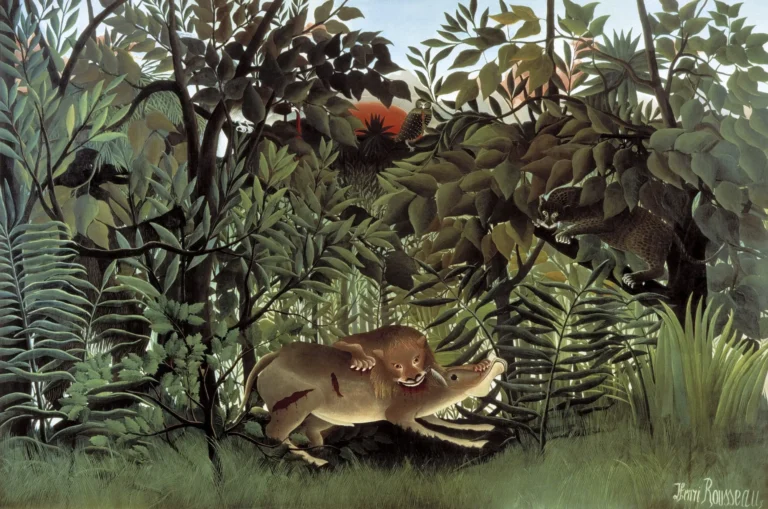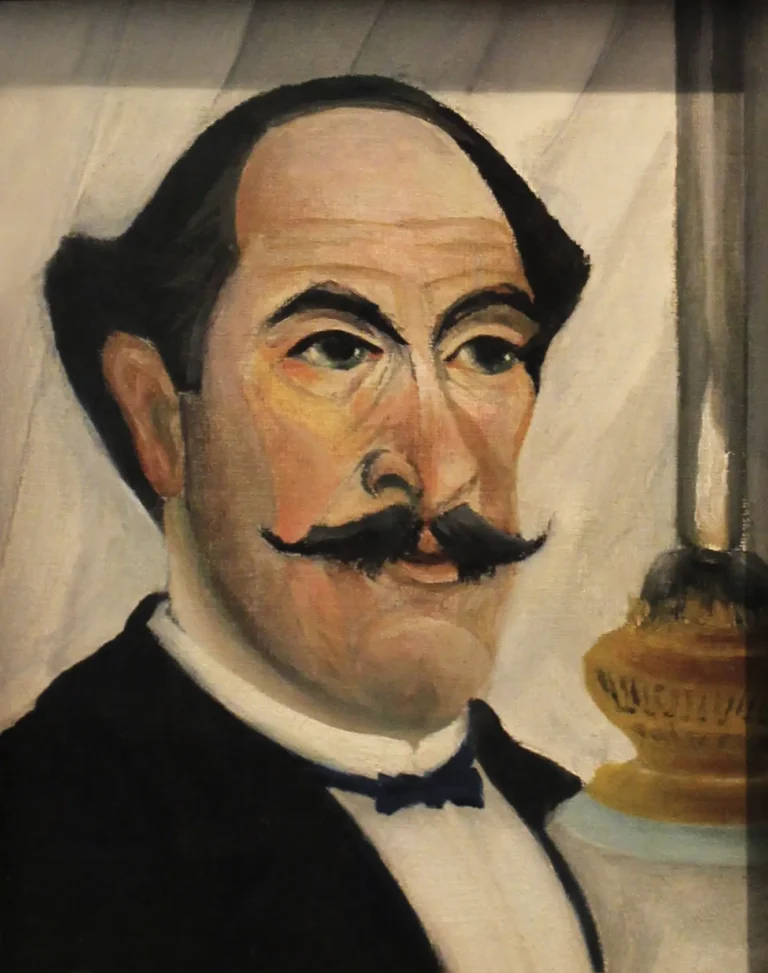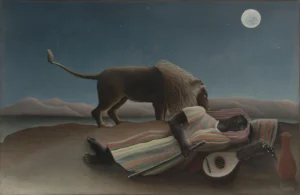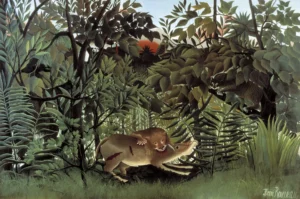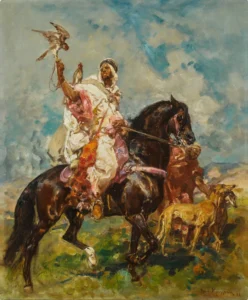The Hungry Lion Throws Itself on the Antelope (1905)
The Hungry Lion Throws Itself on the Antelope is an iconic painting by Henri Rousseau, reflecting his unique approach to Naïve Art. The artwork features a dramatic encounter between a lion and an antelope, set against a lush jungle backdrop. Intricately detailed with various fauna, Rousseau’s work is characterized by a flat style devoid of perspective, enhanced by a rich color scheme, particularly the deep greens and reds of the setting sun. Its vivid imagery evokes a sense of tension and primal instinct, leaving a lasting impression on its audience.
Year 1905
About the Artwork
This dramatic artwork was inspired by Rousseau’s visits to the Paris Muséum national d'histoire naturelle, where he studied a diorama that depicted a Senegal lion devouring an antelope. The painting illustrates Rousseau's fascination with the exotic and the wild, as well as his ability to interpret these themes through a primitive lens. Although initially criticized, Rousseau’s work later garnered respect from influential artists like Picasso and Matisse, leading to a reevaluation of his contributions to modern art.
Did You Know
Liked what you see? Add it to your collection.
Enjoyed reading? Share it.
... continued
Artist and Context
The painting was created by Henri Rousseau, a French artist known for his Naïve Art style, often associated with Primitivism.
Composition and Details
The painting depicts a vivid jungle scene with a dramatic encounter between a lion and an antelope as its central focus. The lion is shown mid-attack, biting into the neck of the antelope. The scene also includes other jungle inhabitants such as a panther watching from the right, an owl holding a bloody strand of meat in its beak, another bird to its left, and a dark ape-like shape lurking in the background.
Style and Technique
Rousseau's style in this painting is characteristic of Naïve Art, featuring a lack of perspective and depth, which creates a flat, almost dreamlike tableau. The color palette is rich with various green shades, set against the backdrop of a deep red setting sun.
Inspiration and Influence
Rousseau based the central pair of animals on a diorama of stuffed animals at the Paris Muséum national d'histoire naturelle, titled Senegal Lion Devouring an Antelope.
Exhibition History
The painting was first exhibited at the Salon d'Automne in 1905, alongside works by other avant-garde artists such as Henri Matisse and André Derain. This exhibition was significant because it included works that would later be associated with the Fauvist movement, although Rousseau himself was not considered a Fauve.
Reception and Legacy
Despite the initial negative reception of his earlier jungle painting, Tiger in a Tropical Storm (1891), Rousseau continued to gain a following among his contemporaries, including artists like Picasso, Matisse, and Toulouse-Lautrec. However, his work was often derided by critics during his lifetime.
Current Location
The painting is now part of the collection at the Fondation Beyeler in Riehen, near Basel, Switzerland.
Dimensions
The painting measures 200 cm by 301 cm (78.7 inches by 118.5 inches).





